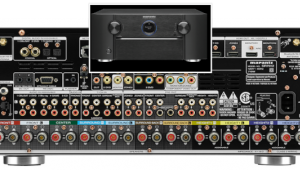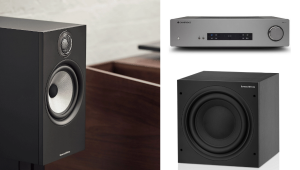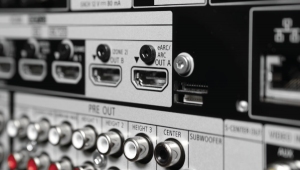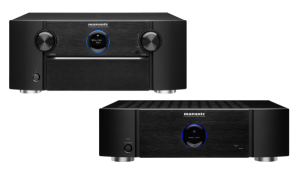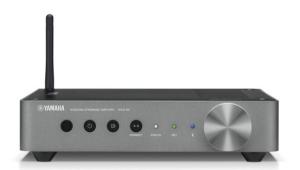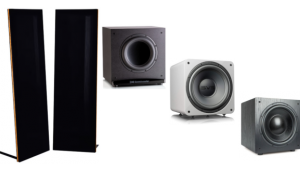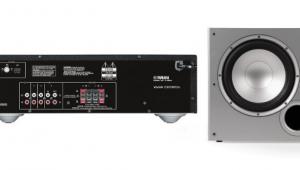Pioneer, Artifacts, Screens

I have been saving to buy a new 50-inch Pioneer plasma this summer. Now Pioneer is getting out of the plasma business completely. Should I still buy? I'm worried about the possible warranty issues and getting repairs in the future.
Jamie Stabl
I would go for it. Pioneer isn't quitting the business until March 2010, and even after that, I have little doubt the company will continue to honor the warranty and provide service for its plasmas. You'll also be glad you waited, since the prices will probably drop over the next few months, and you'll be getting the best flat-panel picture I've ever seen. Just be sure to adjust the picture controls with a setup disc like Digital Video Essentials: HD Basics.
Polka Dots & Artifacts
I own a Sony BDP-S550 Blu-ray player, which is hooked up to a Sony 46-inch XBR TV. Overall, the Blu-ray picture is fantastic. However, I do notice artifacts from time to time. For example, in the movie Wanted, the polka dots on the blouse of the main character's evil boss flicker. Also, there are portions of The Dark Knight in which the buildings in the background flicker. Is this a limitation of the Blu-ray technology, the machine itself, or the settings on my TV? I know other people have reported similar problems, and there are several explanations—limitations of film-based media, limitations of LCD TVs, incorrect TV settings, etc. Are there things that can be done to eliminate or minimize these problems?
Dale Shahin
It's not a limitation of Blu-ray technology, film-based media, or LCD TVs in general. It's probably the settings in your TV. The first thing that comes to mind is overscan scaling, in which the TV slightly enlarges and then crops the image, which can cause the effects you describe in areas of fine detail.
I assume your Sony TV is a recent 1080p model, so make sure the Wide Mode is set to Full and the Display Area is set to Full Pixel. This maps each pixel in a 1080p signal to the corresponding pixel on the screen, eliminating overscan scaling. If your TV is not 1080p, there might be nothing you can do to eliminate these artifacts. (BTW, this is why I always recommend getting a 1080p set if possible, even if you can't theoretically see any difference in detail between 1080p and 720p at the distance you're sitting from the screen.)
Are you sending a 1080i signal from the player? If so, the problem could be the TV's deinterlacer, so try sending 1080p/24 if the TV can accept it or 1080p/60 if not.
Another possibility is the way the movies are encoded on the disc. The Dark Knight was encoded using VC-1, which is prone to causing a bit of moiré distortion in cityscape buildings. I don't know how Wanted was encoded, but if it was VC-1, that could be the problem in that case.
Screen Dreams
My wife and I have finally decided to build a home theater. We've settled on a front-projection system, but I'm hung up on the screen more than anything else. I'm certainly going with Stewart. I've seen some demos of Stewart and Da-Lite, and I prefer the Stewart screen. We'd really like to get a CineCurve at 108 inches wide, but it has a 2.40:1 aspect ratio. Won't this require an anamorphic lens on my projector? Is something like that really necessary? My wife hates the black bars, as I do. Then again, I don't want to have to go looking for movies that are 2.35-2.40 aspect ratio.
Jon Woll
Like all 2.40:1 screens, the CineCurve is designed to be used with an anamorphic lens. The screen's curvature compensates for geometric distortions that occur with such a lens, so if you don't want to include one in your budget, I wouldn't get a CineCurve.
On the other hand, if you get a 16:9 (1.78:1) screen and no anamorphic lens, movies will have black bars on the top and bottom because the aspect ratio of most movies is 1.85:1 or 2.35:1. You can get a screen with motorized masking on the top and bottom to mask off the black-bar areas, but this type of screen is pretty expensive—though probably not as much as an anamorphic lens and CineCurve screen. BTW, the CineCurve can be bought with motorized side masking for watching 2.4:1, 1.85:1, 1.78:1, and 1.33:1 images all with constant height, but this is very expensive. We had a 120-inch version in our studio for a while, and its list price was in the $20,000 range.
Finally, I wouldn't dismiss Da-Lite so quickly. Have you seen the new Affinity screen? It was designed with the help of video guru Joe Kane. Currently, this screen is available with a 0.9 gain, and a version with 1.3 gain is nearing completion. I've seen demos on the 0.9-gain version, and they looked amazing. I'm not down on Stewart at all, but the Da-Lite Affinity is definitely worth consideration.
If you have a home-theater question, please send it to scott.wilkinson@sorc.com.
